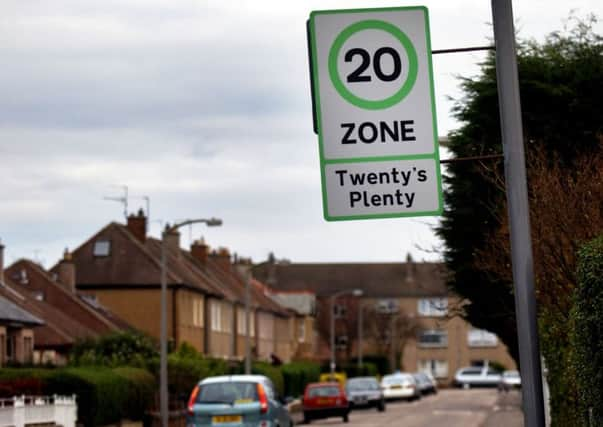Neil Greig: Improving streets requires redesign


In most areas they are popular with local people but the final results can be mixed with safety benefits often overstated. Residents like the idea of slow traffic outside their own front door but are not so keen if it holds them back getting further afield.
The Institute of Advanced Motorists is concerned that some councils may see 20mph speed limits as a cheap and quick fix. Consider the choice for cash-strapped local councils – 20mph zones with expensive road humps, or 20mph limits, just requiring signs. It’s no wonder that “sign only” blanket coverage projects are winning out.
Advertisement
Hide AdAdvertisement
Hide AdInevitably this leads to compromises as roads which look and feel safe at 30 suddenly become 20 for no obvious reason, leading to confusion on the part of drivers. The research is quite clear – drivers take their speed clues from the road environment – that’s why most slow down in congested areas, outside schools or if they can see a hazard.
It has also been found that roads with average speeds above 26mph are the least likely to see traffic slow down, although this does vary street by street. This is why the IAM does not favour a blanket approach to speed limits or a wholesale change in the urban limit from 30 to 20.
We have no problem with lower limits in residential streets and those with a casualty problem or high levels of pedestrian and cycling activity. That may well include parts of the main arterial routes such as Easter Road, Leith Walk, Morningside Road or Bruntsfield Place where the reality is that traffic seldom reaches 30 anyway. Drivers see this and understand it but there will be other parts of these roads where it is not so immediately self-enforcing.
The level of enforcement of blanket 20mph limits is the key to their ultimate image with drivers. If we start to see any moves towards regular enforcement on roads with no casualty problems then public support could fall. Government guidance is clear that if speeds in a 20mph area don’t go down then councils should consider traffic calming or revert to a 30mph limit.
Advertisement
Hide AdAdvertisement
Hide AdThe IAM is happy to support policies to encourage safe cycling and walking but that cannot be done by simply erecting a few signs. In countries such as Holland it took years of investment in segregated cycling facilities to deliver the levels of cycling they now take for granted.
The IAM has no wish to deny anyone the opportunity to live in a better environment but that requires the redesign of shared spaces and our streetscape to make it clear who has priority. For example, Leith Walk today is an unpleasant “canyon” of big, intrusive buses and noisy traffic. Without redesign it will always remain so even if speeds do go down a little.
• Neil Greig is director of research and policy at the Institute of Advanced Motorists